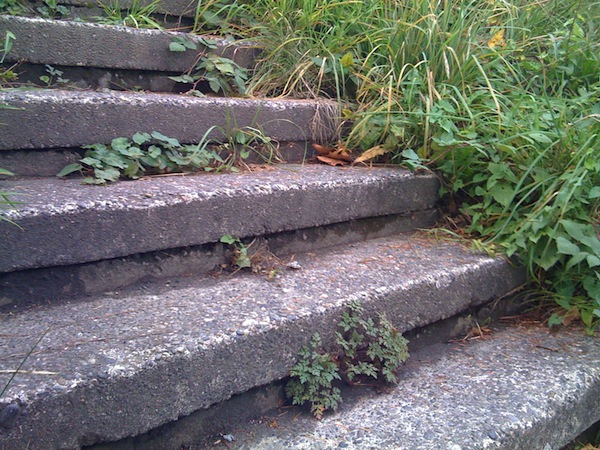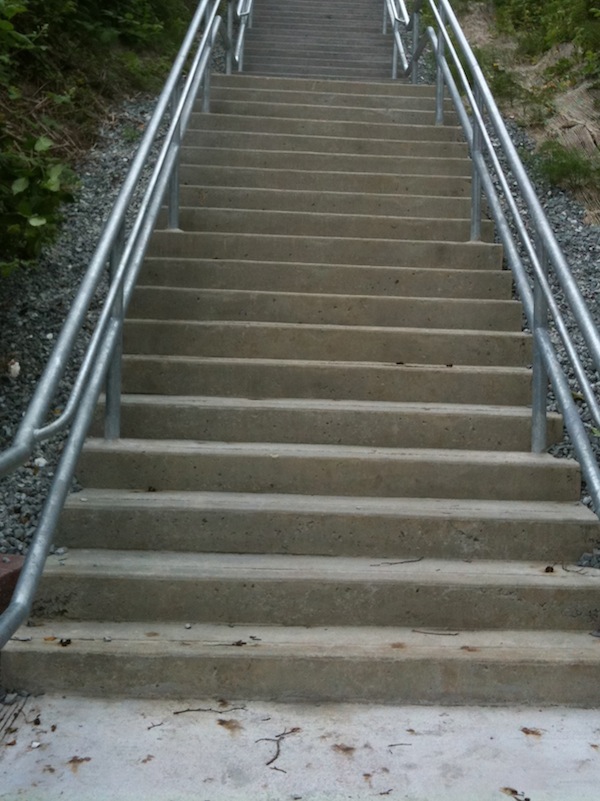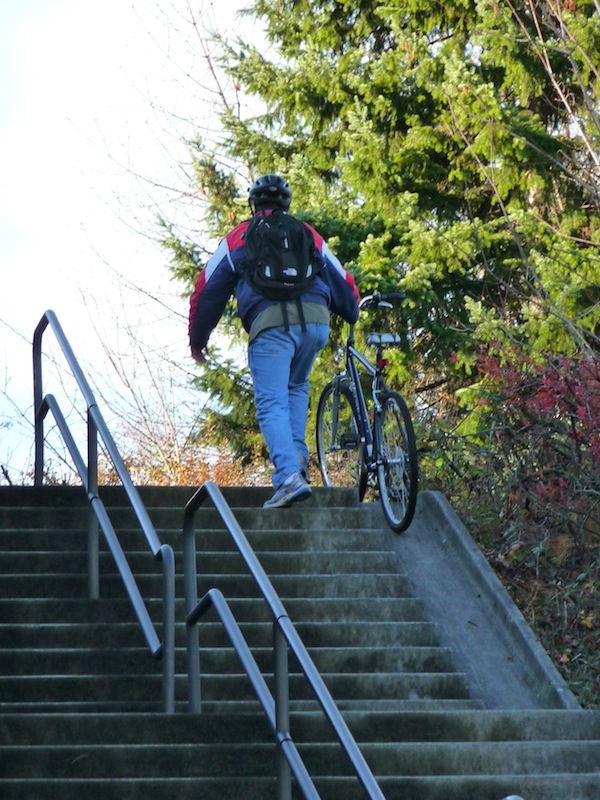"Fauntleroy and Morgan Junction" Stairway Walk Update
Thistle stairs on a rainy day
Starting in February 2014 and continuing for the next two years or so, walkers on the "Fauntleroy and Morgan Junction" stairway route (Chapter 16) will encounter a large construction project, soon after exiting Lincoln Park. We think the route will stay walkable, despite major impacts on either side of Beach Drive where the route passes next to Lowman Park.
The project will add storage capacity to the King County system that transports sewage and drainwater, from residential areas along the Sound all the way up to the sewage treatment center near Magnolia's Discovery Park. There are pumping and storage stations all along the way, including at Lowman Park. A huge tank will be built across the street from the park, adding a million gallons of storage. This means that, during heavy downpours, "combined sewer outflows" (sewage plus stormwater) will be much less likely to overwhelm the carrying capacity of the transport system. When that happens, the combined sewer outflow has nowhere to go but into Puget Sound.
It's been a controversial project. On the down side, the storage facility will occupy formerly private land that just months ago contained rental housing across the street from Lowman Park. On the upside, there'll be much less chance of polluting Puget Sound during heavy storms, and the new facility will add landscaping and stairways atop the underground tank and the control station, offering new panoramas of Puget Sound.
 Construction,
Construction,  Fauntleroy,
Fauntleroy,  Morgan Junction,
Morgan Junction,  update |
update |  Jake Jaramillo
Jake Jaramillo 






